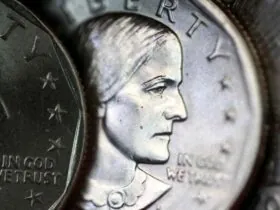Before purchasing a lottery ticket or making a regular purchase with your $1 bills, take a moment to check if you might be holding onto a hidden gem. Certain $1 bills, due to printing errors, could fetch a surprising amount of money from collectors. In fact, according to Wealthynickel.com, two specific batches of $1 bills printed in 2014 and 2016 could be worth anywhere from $20,000 to $150,000 if they meet the right criteria.
Let’s explore how to spot these rare bills and what other types of currency you should keep an eye out for.
The $1 Bill Error: A Collector’s Dream
This Article Includes
The U.S. Bureau of Engraving and Printing made a rare printing mistake in two separate batches of $1 bills, and while these errors went unnoticed at first, they are now a collector’s prized find. The two batches, printed in 2014 and 2016, were released into circulation before the error was identified, resulting in approximately 6.4 million banknotes in total.
Collectors have been on the lookout for pairs of bills that feature this mistake, and when found, these bills can fetch a significant sum. According to Wealthynickel.com, only nine pairs of these rare bills have been confirmed, making them extremely valuable.
How to Spot a Rare Pair of $1 Bills
To determine if you have one of these sought-after $1 bills, check for the following specific characteristics:
- Series Date: Look for the “Series 2013” marking, located on the right side of George Washington’s portrait.
- Federal Reserve Seal: Ensure that the bill features a “B” Federal Reserve Seal located above the serial number.
- Serial Number: The serial number should fall between “B00000001★ – B00250000★” or “B03200001★-B09600000★,” with a star symbol included.
Both bills in the pair must meet these exact criteria to be of value to collectors. If you have two matching bills, you could potentially have a rare pair worth up to $150,000.
Valuable Currency Beyond $1 Bills
While $1 bills with printing errors can command a high price, other types of currency are also highly sought after by collectors. U.S. Currency Auctions reports that uncirculated $2 bills from 1890 can sell for as much as $4,500, and bills from nearly every year between 1862 and 1917 could fetch at least $1,000.
One notable example involves a 2003 $2 bill that was sold at a Heritage Auction in July 2022 for $2,400 and later resold for $4,000. The value of these bills is influenced by factors such as the printing method, the location of the printing, and the bill’s condition.
The Surprising Value of Nickels
Not just bills, but even coins like nickels can be worth much more than their face value under the right circumstances. For example, a 1921 buffalo nickel in mint or lightly circulated condition can be worth around $1,500 if it bears the letter “S” for San Francisco on the reverse side, as noted by coin collector David Sorrick in a USA TODAY interview.
The Ultimate Collectible: Rare $10,000 Bills
If you’re fortunate enough to find a $10,000 bill, you could be holding onto an incredible treasure. A 1934 $10,000 bill was sold for a staggering $470,000 at a Heritage Auction in Dallas, underscoring the potential value of rare U.S. currency.
Conclusion
While it might seem unlikely that you’re carrying around rare and valuable currency, it’s worth taking a second glance at your $1 bills, $2 bills, and even your nickels. With a little attention to detail, you could discover a hidden treasure worth thousands, if not more.
Remember, the value of these bills and coins depends heavily on their condition, rarity, and specific characteristics. Whether you’re a seasoned collector or just a lucky find, don’t overlook the potential in your wallet. You might just have something worth far more than face value.







Leave a Reply